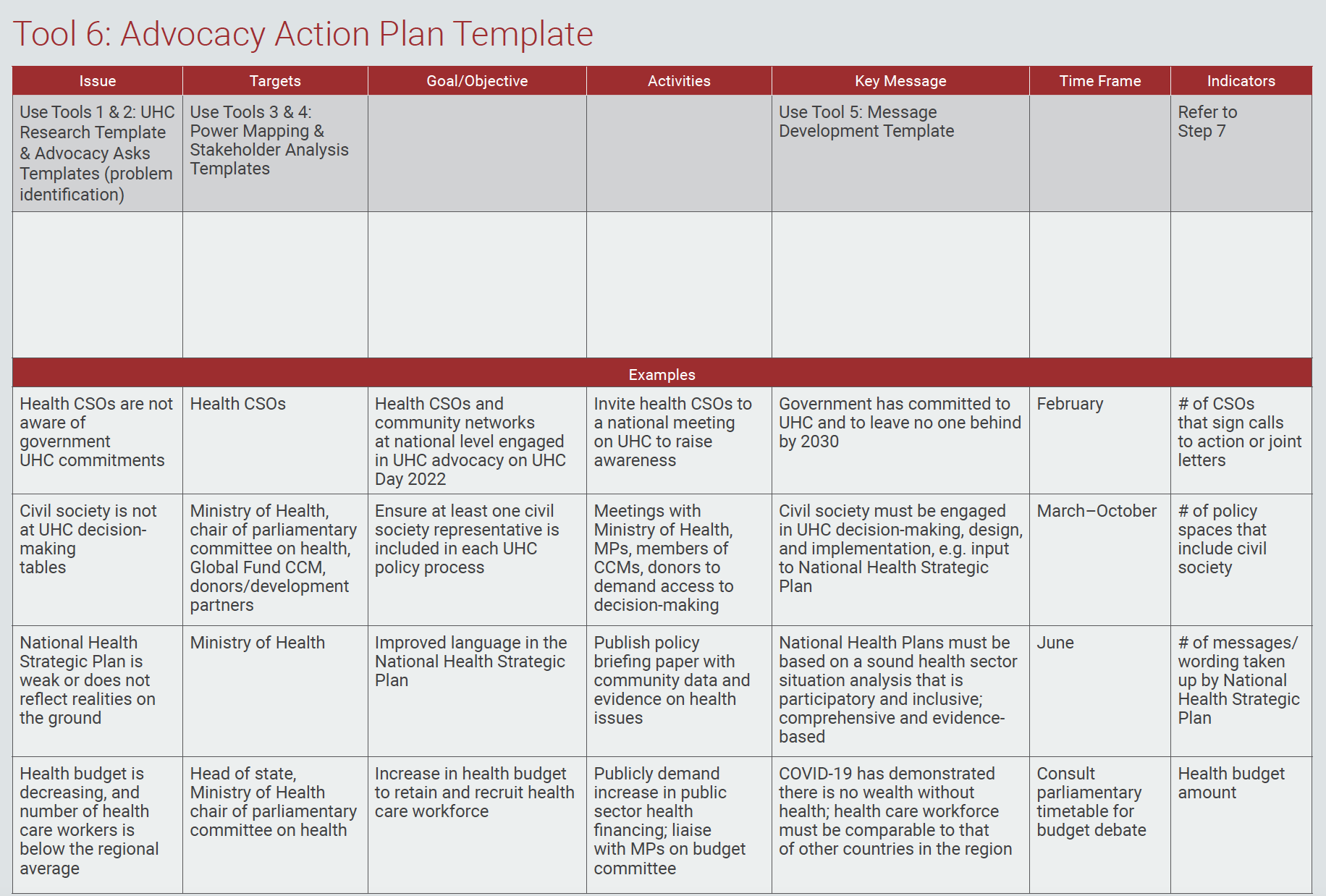Develop an Advocacy Action Plan
Having explored and mapped the issues, stakeholders, targets and policy processes, you can bring everything together into an advocacy action plan using Tool 6: Advocacy Action Plan Template.

Four ways to increase civil society and community engagement in UHC
- To generate grassroots demand for change—consider how you can broaden awareness of UHC within communities that have the most to gain from better and broader health coverage and among the wider electorate.
- Push for the inclusion of civil society in all stages of UHC planning, implementation and evaluation
- Empower people and communities to hold governments accountable for their health commitments by sharing information and case studies
- Ensure you include diverse voices and perspectives in your advocacy efforts, as well as meaningful engagement of vulnerable and marginalized communities, to ensure no one is left behind
Engage with stakeholders online
Digital advocacy is increasingly important to understand and implement, as seen during the COVID-19 pandemic. Digital tools include social media platforms in addition to targeted emails, online petitions and campaign websites, and virtual events. Much like in a traditional campaign, evidence and storytelling must be centered in developing a successful digital advocacy plan. Importantly, the target audience must be defined early in the process so that appropriate digital tools can be selected and prioritized. A detailed digital addendum will be added to the CSEM website to complement this toolkit.
Take part in International UHC Day on 12 December!
Whatever your level of resources or capacity, it is very easy to support UHC by participating in Universal Health Coverage Day advocacy on 12 December each year. UHC2030 is the secretariat for UHC Day and has a campaign site with a wide range of advocacy tools and easy-to-use social media resources in multiple languages.
Things to consider as you develop your advocacy plan
- Plan advocacy actions in partnership with others, taking care to meaningfully include vulnerable and marginalized communities
- Build on existing alliances and successful strategies
- Engage key decision-makers, partners and advocates beyond the health sector
- Review your strengths and weaknesses in terms of your advocacy capacity and skill-set to determine how best you can contribute to national advocacy efforts and where you would make the most impact
- Establish the key moments in the year when health will be in focus –these could include national or district elections when government budgets are going through parliament, the development of a new national health strategy, or global events, such as World Health Day (7 April)
- Identify your government’s key development priorities and which of the 17 SDGs are their current focus. Advocacy messages for UHC can apply to many of the different SDG areas such as poverty (SDG1), hunger (SDG2), education (SDG4), gender equality (SDG5), water and sanitation (SDG6), economic growth (SDG8)
Key Resource
Consider undertaking budget analysis to gain detailed insights into government spending on health. Conduct a workshop for your organization and others interested in influencing budget decisions with the toolkit on health budget literacy, advocacy and accountability for UHC.

